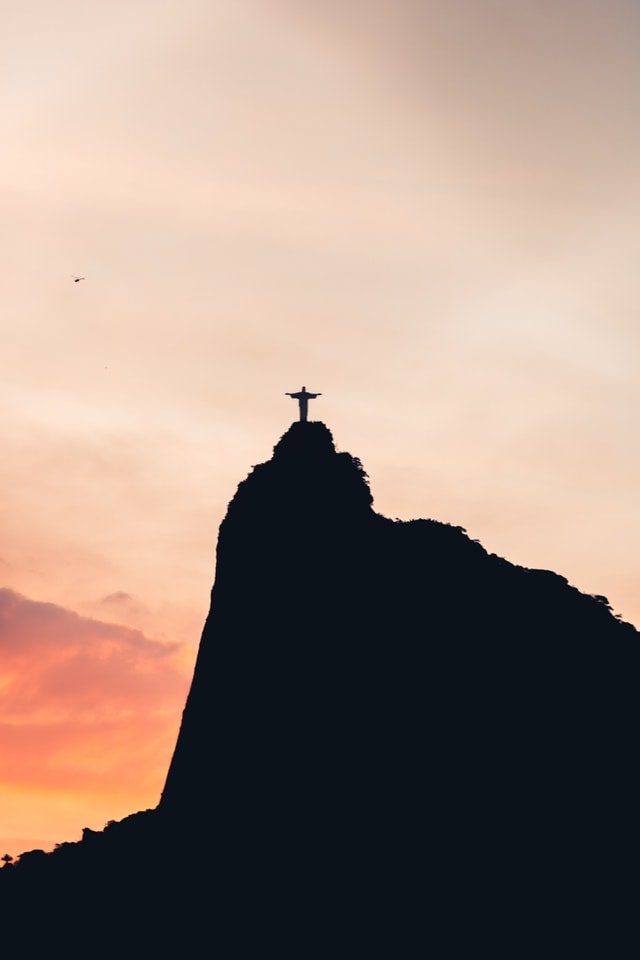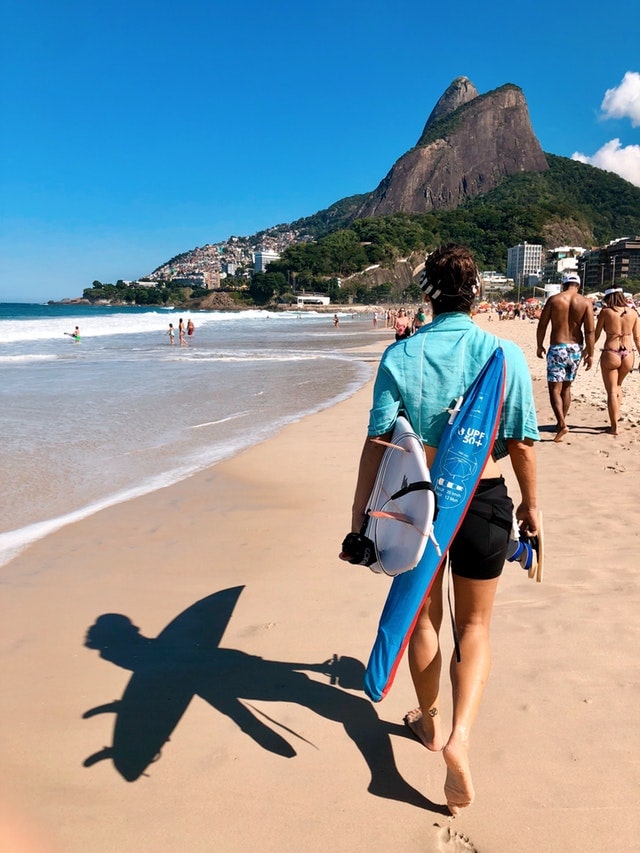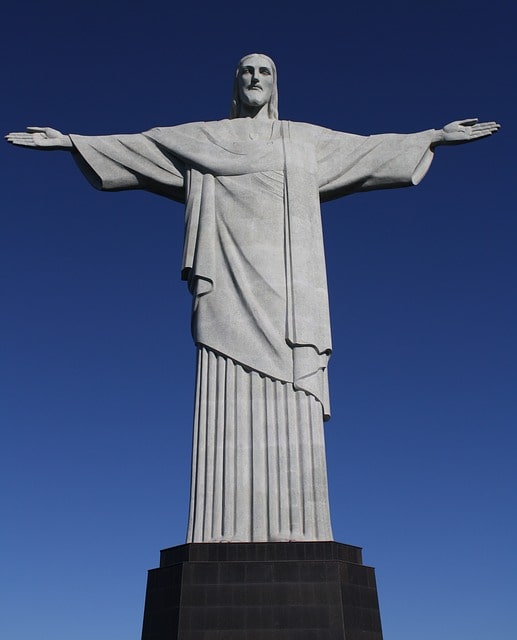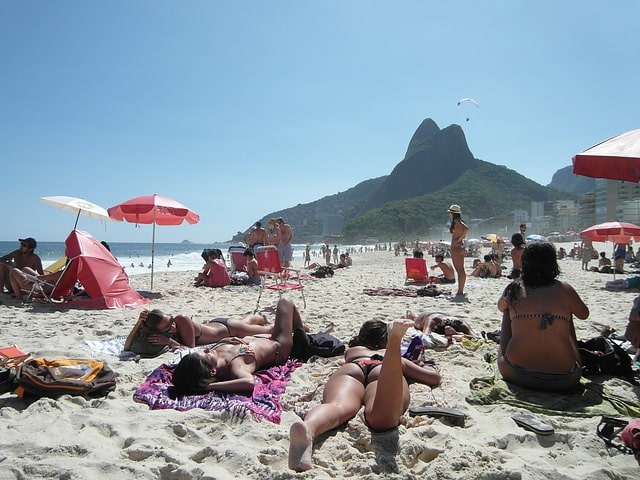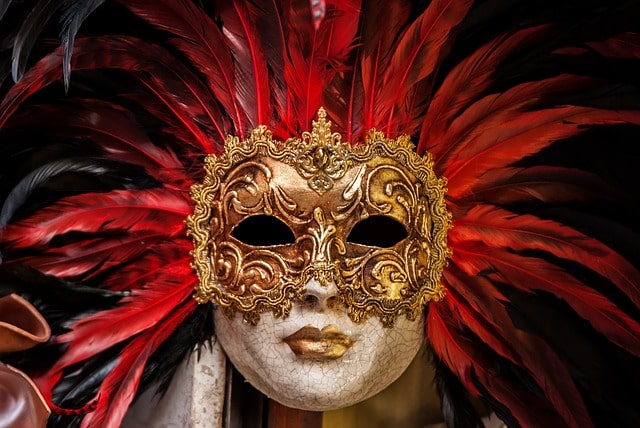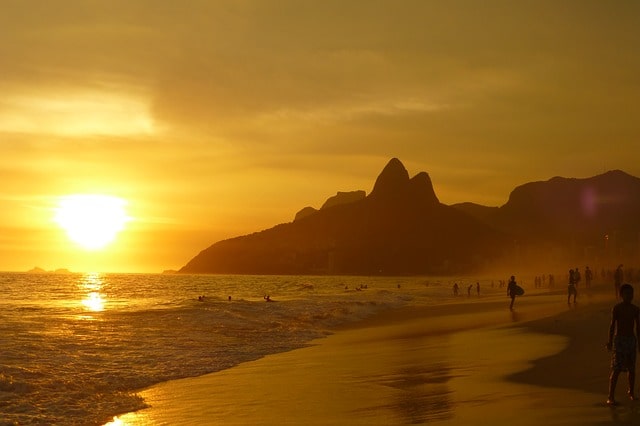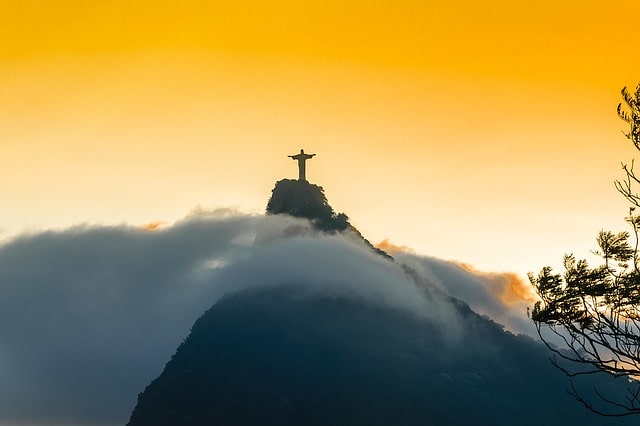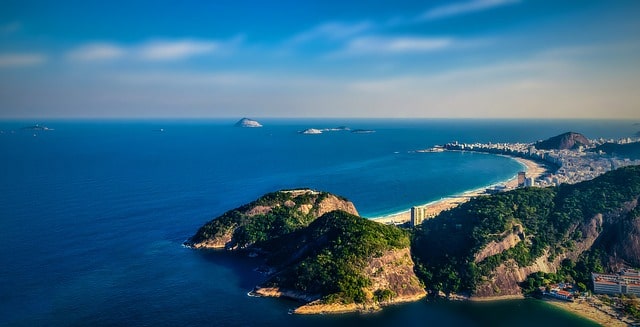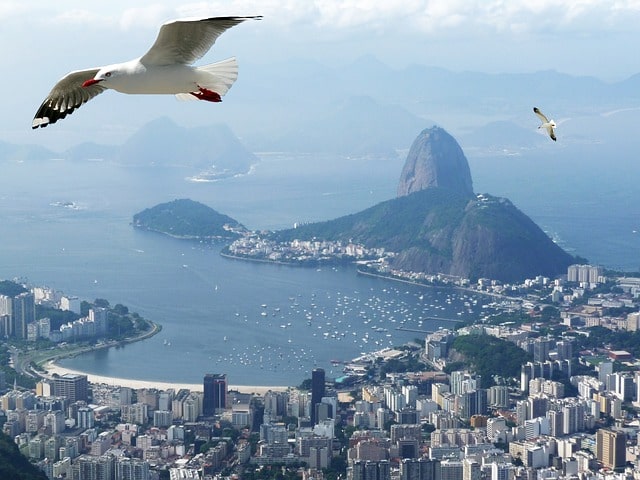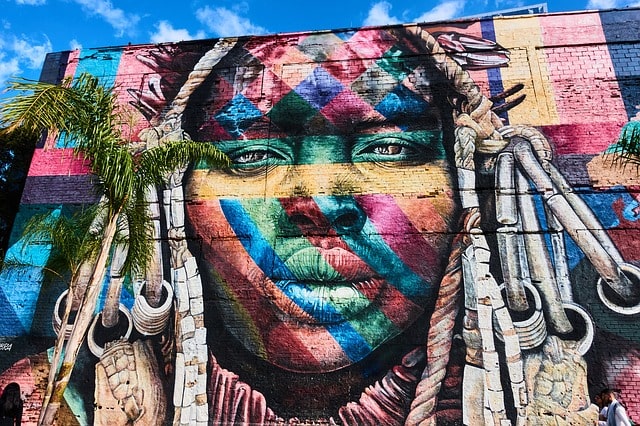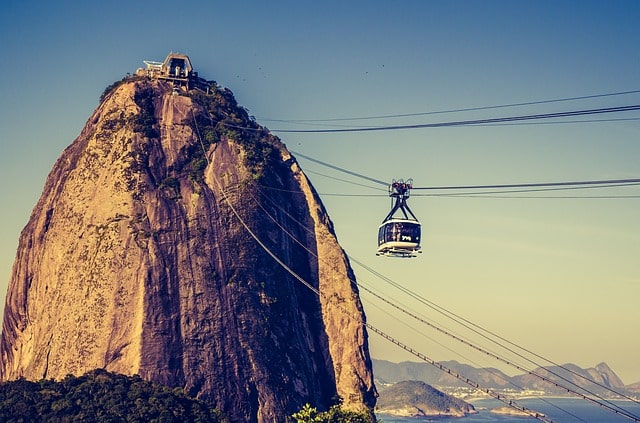Rio de Janeiro is located west of the Guanabara Bay, with a huge extension of the metropolitan area that goes from Copacabana to Itaipu. The urbanization is based on flat land, surrounded by hills, stone hills and other geographical features, such as the Gobernador and Paquetá Islands that extend the metropolitan area. The city of Rio de Janeiro is divided into four very different zones: the South, the North, the West and the Central. For tourism, the Central and South areas are interesting, where we can find great historical buildings, cultural attractions such as museums, art collections and churches with incredible architecture. On the other hand, we find beautiful landscapes surrounded by mountains, sea and beaches that are a dream; and at night you will have dozens of bars and nightclubs to visit.
リオデジャネイロ
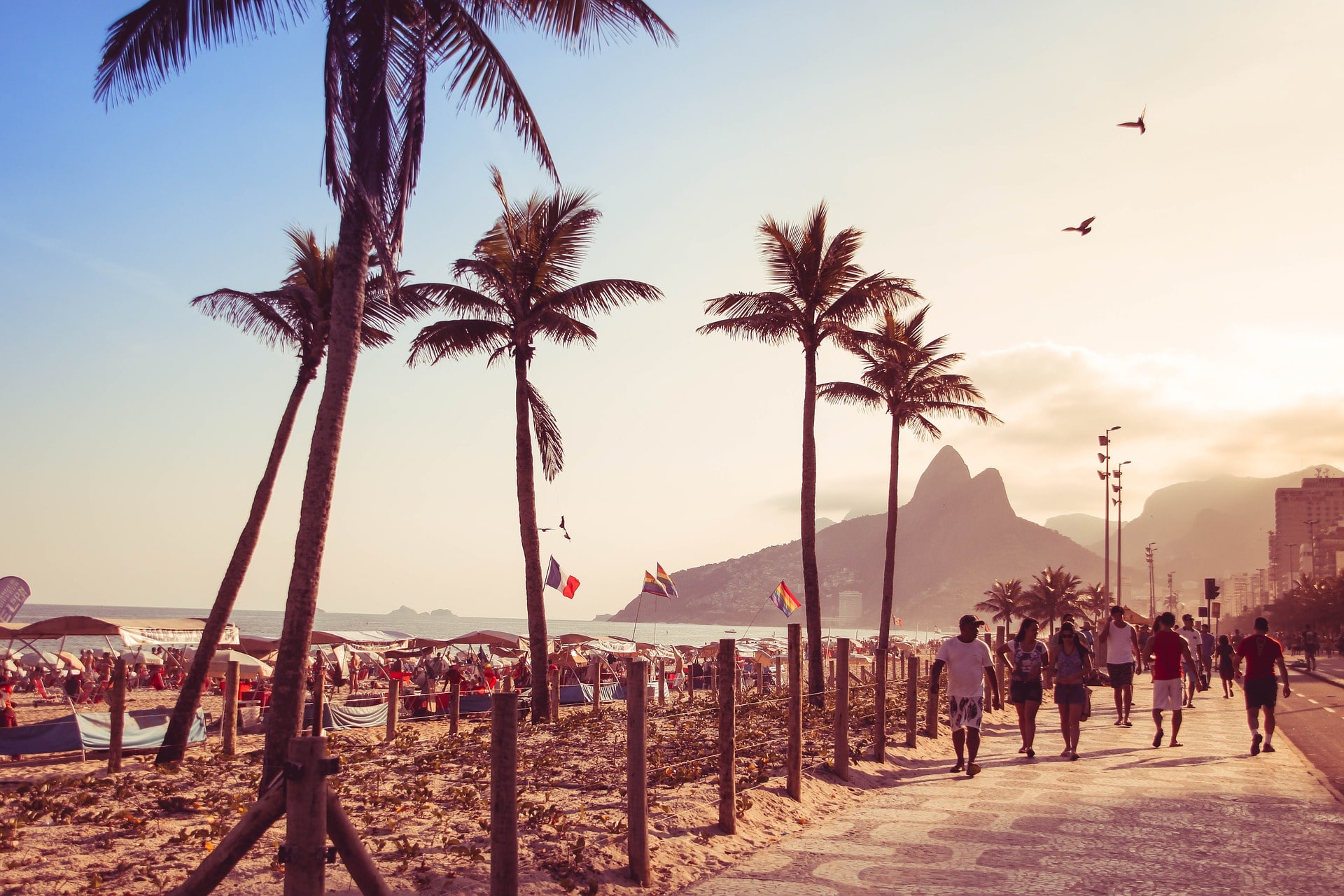
リオデジャネイロ in Rio de Janeiro State (ブラジル)
リオデジャネイロ guide
What to do in リオデジャネイロ
Rich in landscapes and activities, Rio de Janeiro is a city full of entertaining proposals for great holidays.
• "Corcovado"
Rio de Janeiro offers the opportunity to visit one of the Wonders of the World: the famous hill "Corcovado" and the even more famous statue of "Christ the Redeemer". The climb to Corcovado is an adventure that will enchant the whole family. They are 710 meters high that can be climbed by train, in a journey of about 20 minutes to the foot of the Christ the Redeemer. From there, you have to climb many stairs or take the escalators to access the viewpoints. The panoramic view of the city, its beaches and mountains is a must see to share with the family.
• Beaches
The beaches are always perfect scenarios for fun. And even more so when it comes to the best urban beaches in the world, like those in Rio de Janeiro, with its excellent combination of incredible natural panoramas and a wide infrastructure of services and entertainment. In the crowded Copacabana, the legendary Ipanema and the unforgettable Barra da Tijuca and Leblon, the whole family can enjoy sun and sea, as well as several leisure options, from soccer and volleyball courts to bars with lively music.
• Tijuca National Park
Famous for being the largest urban forest in the world, the Tijuca National Park (where the mythical Corcovado is located) is an unmissable adventure site to enjoy with the family. Attractive geographical features, thousands of tree species and leafy exotic plants turn this 3,300-hectare park into a Biosphere Reserve according to UNESCO. The Tijuca Park has excellent services and a wide range of ecological walks, with signposted hiking trails and exciting viewpoints.
• Bread of sugar
The views that are obtained from the 396 meters of height of the Pan de Azúcar are among the most beautiful in Rio de Janeiro. It is a must for the family to take the cable car "Bondinho" of the Pan de Azúcar, which connects the Morros Babilonia and Urca, flying over the city and the beautiful Guanabara Bay.
• Rio Water Planet
The most extensive water park in Latin America is located in Rio de Janeiro, with sensational attractions for children and adults. In a privileged environment of Mata Atlantica, Rio Water Planet offers rest areas, artificial beach, lazy river, water slides, an aquatic roller coaster, shows and numerous restaurants to spend a day at pure fun. The park is located on the Estrada dos Bandeirantes, Vargem Grande neighborhood.
• Botanical Garden
The exuberance and variety of the Brazilian flora is condensed in the Botanical Garden of Rio de Janeiro, an ideal place to learn and relax in close contact with nature. Medicinal herbariums, bromarios, orquidarios, carnivorous plants, cultivated areas and numerous hectares of forests make up this important Research Institute, one of the largest collections of plants on the planet. The Botanical Garden opens its doors on Rua Pacheco Leao, offering ecological tours, tours of historical buildings and recreational activities.
• Zoo Garden
A classic family walk in every city is to visit the zoo, located in the beautiful Quita Boa Vista. Rio de Janeiro has a pioneering Zoological Garden in environmental innovation and animal welfare, which makes every walk around the place an unforgettable experience. There you can see more than two thousand mammals, birds and reptiles from all over the world. The RioZoo Foundation, manager of the zoo, is committed to recreational and educational programs so that adults and children know more about the ecological wealth of the planet.
• Banco do Brazil Cultural Center
One of the most attractive sites for educational and cultural tours is the Banco do Brazil Center, whose building was originally an imperial house. Art exhibitions, theaters, movie theaters, musical shows and historical collections make up the varied proposal of this great Cultural Center, located at Rua 1 de Marco, 66. The large agenda of the institution includes shows and activities for children.
• Aldeia das Aguas Park Resort
With more than 300 thousand square meters of aquatic fun and great international recognition for the quality of its facilities, Aldeia das Aguas is a great option for family entertainment. The aquatic complex offers swimming pools with various attractions, artificial waves, children's areas, river of current and the tallest water slide in the world (50 meters high), registered in the Guinness Book of Records. Aldeia das Aguas is located in Barra de Paraí, just 120 kilometers from the capital of Rio de Janeiro, and has apartments to stay with family and enjoy several days of the spectacular park.
• Angra dos Reis
Nothing more relaxing than taking a boat and touring the Costa Verde Fluminense until you reach - in less than three hours - the paradisiacal Angra dos Reis. In its hundreds of islands and beaches there are plenty of ecological activities and adventure, exploring unspoiled landscapes and enjoying the crystal clear waters of the inlet. In Ilha Grande there are attractive proposals for family accommodation and a full range of tourist services. A recommended lodging option is Blue Tree Park on the coast of Angra continental, a large tourist complex with entertainment for the whole family.
Food in リオデジャネイロ
The food in Rio is very varied, since its dishes are the result of many influences: indigenous, African, Portuguese, Italian, German, Arab. The recipes of Rio de Janeiro are very popular with tourists because of their unique flavor and variety of ingredients, unique in the world.
Seafood, rice with beans, tropical fruits, roasted meat and corn derivatives are some of the main ingredients that form the indigenous dishes of Brazil, although each region of Brazil has its repertoire of recipes determined by its cultural heritage, the ingredients of the area and what is more appropriate to eat according to the weather.
One of the peculiarities of the cuisine of Rio de Janeiro are the churrasquerías that are found throughout the city and that offer different cuts of meat to its customers. The range of fruit and vegetable salads is very wide in these places. Eating in these places allows you to get closer to the most authentic Brazilian cuisine, since you can try a bit of everything and the price is very affordable for all budgets.
There is also a series of fruits that you have to try in Rio, such as passion fruit (passion fruit), guava, papaya, sugar cane, coconut and mango, whose flavors are truly spectacular.
Traditional dishes
Some of the main dishes are the feijoada, whose ingredients are black beans, rice, fried cassava flour (yucca), pork, chorizo, bacon and orange.
The tapioca, which are a kind of tortillas similar to crepes and that can be mixed with some foods. The munguzá is a porridge of corn seasoned with coconut, the pirarucu is a fish from the Amazon cooked in walnut milk, the banana, as well as fruit, it is also made pureed boiled in milk, the ox fish is a fish that is taken cooked or roasted and, finally, the coalho cheese, which is served roasted.
Other typical dishes
In the streets of Rio and in other cities of Brazil it is very common to see the streets selling acarajé, which is the typical sandwich of the region, a bun made with feijoo fradinho and shrimp fried in palm oil that has its origin in Africa.
Another well-known dish is the "pamoña", which is a bun of cooked corn pasta, wrapped in leaves of the same vegetable or banana. It can be cooked in a sweet or salty version, adding bacon, onion and tomato. The vatapá is a thick shrimp cream, with coconut milk and bread.
Typical sweets in Rio de Janeiro
As for the desserts, we have the traditional quindim, from the Portuguese culture, which has egg yolk, grated coconut and sugar. Add coconut is undoubtedly an idea of African slaves in the seventeenth century, planters of this fruit so ingrained to Brazilian sweets. The canjica is a cake made with corn, condensed milk and sugar, which is eaten together with coconut milk and peanuts especially at parties.
The sweet character of the Brazilians, especially those from Rio, is reflected in their gastronomic tastes, since they love cakes, and there is a whole range that they prepare using tropical fruits, such as guava, fig, papaya and of quince.
Climate in リオデジャネイロ
The climate in Rio de Janeiro is defined as Atlantic tropical, with hot summers and moderate temperatures in winter.
The climate in Rio de Janeiro is quite pleasant during all seasons so any time of the year is good to visit. In Rio there is no low season, tourists go mostly during the summer months, but it is also quite crowded in winter, autumn and spring.
In summer the temperature does not rise in an extreme way, but the concentration of humidity causes the thermal sensation to increase a lot. The heat in Rio can be suffocating during the day and also at night, because the temperature does not drop enough to cool the city. Summer is the rainiest season of the year, because it receives winds from the south. In general, torrential rains fall in the afternoon, but they last a short time, so they are not an impediment to get to know the city.
The maximum temperature that reaches the day in Rio is 35 ° C, although in some areas of the interior of the city can reach up to 40 ° C. In the regions of the city most visited by tourism, which are located on the coast, the temperature moderates a lot thanks to the sea breezes from the Atlantic Ocean.
The winter is very moderate, and presents temperatures that oscillate between 18 and 27 ° C. The coldest months are June and July, with the lowest temperature recorded at 5 ° C. Winter days are usually sunny, and rains occur less frequently than in summer.
During the months of the spring and autumn seasons, we can say that it is the middle season for tourism. Not as many visits are received as in summer and winter, but nevertheless the climate is very pleasant, conducive to visit and tour the city and its surroundings.

 English
English
 Español
Español
 Français
Français
 Italiano
Italiano
 Português
Português
 Deutsch
Deutsch
 简体中文
简体中文
 Filipino
Filipino
 Bahasa Malaysia
Bahasa Malaysia
 한국어
한국어
 Tiếng Việt
Tiếng Việt
 ภาษาไทย
ภาษาไทย
 繁體中文
繁體中文
 हिन्दी
हिन्दी
 Eesti
Eesti
 Slovenčina
Slovenčina
 Slovenščina
Slovenščina











